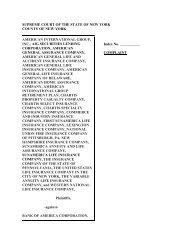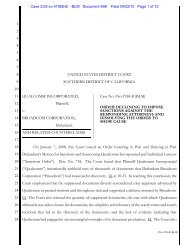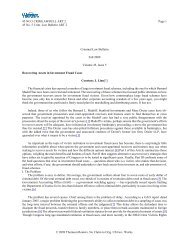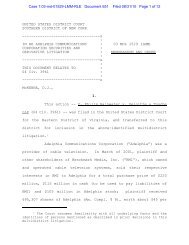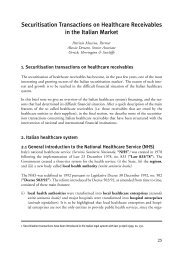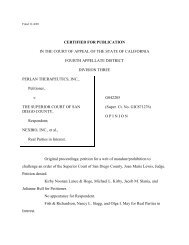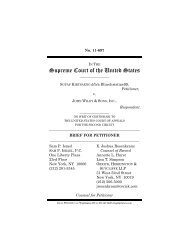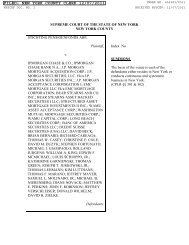Public Charter Schools Borrowing With Tax-Exempt Bonds, Second ...
Public Charter Schools Borrowing With Tax-Exempt Bonds, Second ...
Public Charter Schools Borrowing With Tax-Exempt Bonds, Second ...
You also want an ePaper? Increase the reach of your titles
YUMPU automatically turns print PDFs into web optimized ePapers that Google loves.
chapter seven<br />
Investor Perspectives<br />
As described above in Chapter 6, “Credit Considerations,” investors who will<br />
buy a public charter school’s bonds do not rely solely on the assessment of<br />
a credit rating agency, but instead review a breadth of available information<br />
about a school’s bonds. Many investors apply their own unique due diligence<br />
process to determine their own internal credit rating for a public charter school’s<br />
bonds, irrespective of the third-party rating agency’s assessment. In this review<br />
process, investors typically focus on similar categories of information as credit<br />
rating agencies. However, some of the market’s most active institutional public<br />
charter school bond investors indicate that they place emphasis on particular<br />
characteristics of a transaction, as follows: 22<br />
1. Governance and Leadership. The composition of the public charter school’s<br />
leadership team, including the board of directors, is key to investor assessment<br />
and some investors expect to have personal interaction with members of the board<br />
before making an investment decision. Strong leadership includes a board of<br />
directors that is independent from the CEO, with clear separation of duties among<br />
qualified individuals across key areas of expertise necessary to guide the public<br />
charter school, including finance, accounting, management, legal, instructional<br />
background, as well as influential local community members who can assist the<br />
school in navigating local and regional political dynamics that may affect the<br />
program. Strong leadership also includes executive staff or administrators with<br />
requisite programmatic expertise, as well as reasonable expectations about growth.<br />
Growth plans should be supported by an analytical framework, and not simply the<br />
passion of a charismatic school leader.<br />
<strong>Public</strong> <strong>Charter</strong> <strong>Schools</strong> <strong>Borrowing</strong> <strong>With</strong> <strong>Tax</strong>-<strong>Exempt</strong> <strong>Bonds</strong>, <strong>Second</strong> Edition 31



